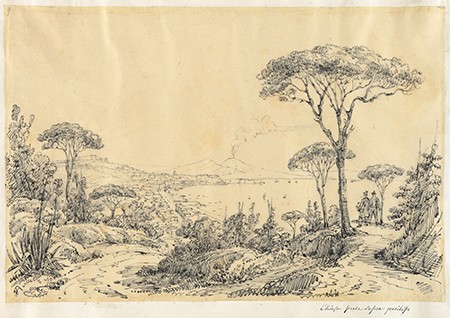Art and architectural historians have given little attention to the history and use of tracing paper despite its centrality to a wide range of practices since the sixteenth century. Produced through an infusion of chemically unstable oil, wax, butter, or varnish or consisting of standard paper heavily beaten through a mechanical process, tracing paper is inherently fragile, and thus the existing literature concentrates primarily on problems of conservation and treatment. Early modern artists appear to have understood transparent papers as merely an intermediary, material step facilitating either copying or preparation for engraving. Although tracing paper is well documented in artists’ manuals, inventories, and sales catalogs, few early examples survive, and even fewer were collected. From the end of the eighteenth century, however, the number of extant examples rises remarkably. Tracing paper enabled artists to copy and circulate motifs from objects unlikely to be removed from Italy, as well as from works in private collections, and it facilitated publication in albums of antique figures and ornaments.
In the first half of the nineteenth century, transparent paper began to serve purposes beyond copying. Jean-Auguste-Dominique Ingres (1780–1867), for example, used transparent papers as part of a complex working process. The Louvre sketchbooks of Louis-François Cassas (1756–1827) and Prosper Barbot (1798–1878), made in Italy in 1820–1822, attest to travelers’ use of transparent paper, which was both lightweight and water-resistant. There is also a small group of remarkable travel albums on tracing paper that were not intended for personal or workshop use but were acquired as finished works by collectors on the Grand Tour. They document how, for the first time, tracing paper was used for drawings that were aimed explicitly at the market. My research while in residence at CASVA focused on a superlative example of this idiosyncratic, short-lived use of tracing paper, a recently acquired album of Italian views by Antonio Senape (1788–after 1853) in the National Gallery of Art collection.
Senape was one of the most prolific Neapolitan vedutisti of the first half of the nineteenth century. The Gallery’s album, dated 1848, exemplifies the technique that became synonymous with Senape’s name, the “disegno con la penna.” It consists of sixty-five line drawings on transparent paper depicting horizontal vistas of Campania, Sicily, and northern Italy. Senape composed such ambitious, meticulously executed albums for Grand Tourists. My research revealed that the album was purchased by an Irish aristocrat, Archibald, Viscount Acheson, who toured Italy with his family in the autumn of 1848. The album belonged to the world of the antiquarian amateur, who, by purchasing such an object, was able to bring back not only views but also evidence of an exchange with a celebrated vedutista.
At CASVA, I had the opportunity to study the album closely and, in conversation with Michelle Facini, paper conservator at the National Gallery of Art, to identify the highly specific materials that Senape chose. The paper is of a heavily beaten type bought in rolls that contemporary advertisements indicate were sold by color merchants. Beaten paper is less transparent than tracing papers impregnated with other substances, but it has the benefit of aging much better, thereby serving more easily as a support for a finished work than as an intermediary, ephemeral tool. In order to secure these fragile sheets, Senape had them meticulously pasted onto the album’s support of thick, very high-quality Italian paper using cellulose glue.
While at CASVA I was able to situate the NGA album among comparable albums by Senape on the art market, particularly one published by Leonardo di Mauro in 2001 and another, dated 1844, that was sold in 2014. It was possible to establish Senape’s working method and the advantages of employing transparent paper. Senape must have retained a series of classic Grand Tour landscape drawings from which clients could choose a specific sequence that would constitute an album reflecting an individual itinerary on the peninsula. Using transparent paper allowed the artist to work quickly and confidently and to deliver a product in a relatively short time; presumably such an album, copied from Senape’s templates, could be executed in a matter of days. Clients could thereby acquire original works of art by a renowned draftsman invested with a far greater aura than a series of comparable prints without having to wait for weeks while the commission was being completed. This singular means of using transparent paper as a commodity readied for the art market remained a unicum in the history of nineteenth-century vedute; however, it also served as a curious middle ground between lithographed albums and watercolor drawings and paintings by Senape’s rivals in the Posillipo School.
